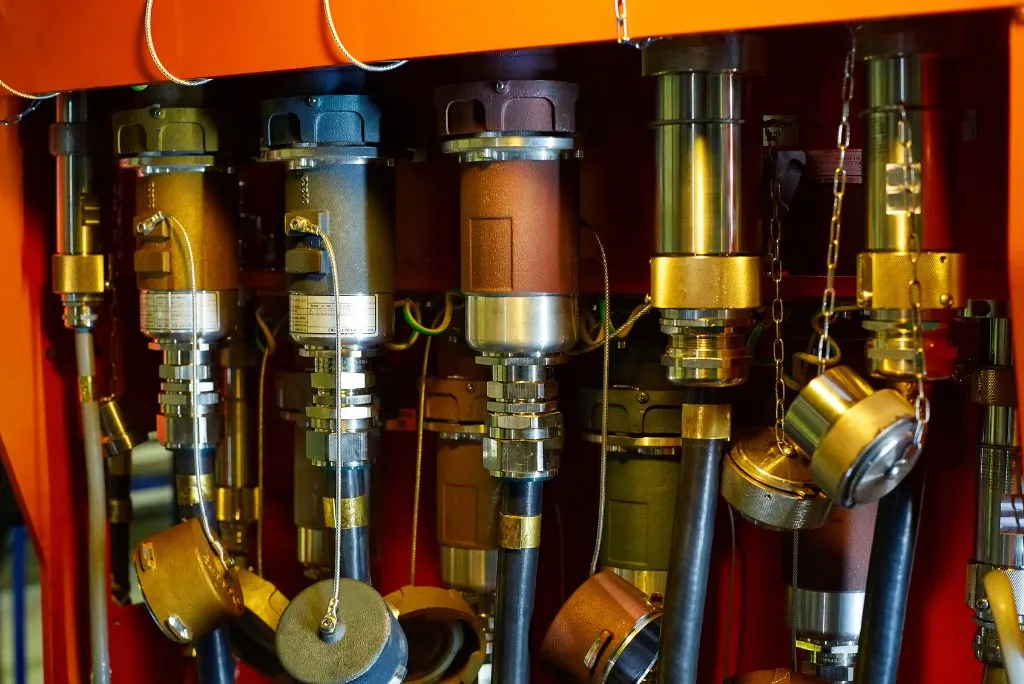Low Hydraulic Fluid Symptoms: What You Need to Know

Maintaining the correct level of fluid is essential!
When the system warms up, the fluid will expand and pour out of the vent, causing the system to overfill. However, there are also times that you’ll experience a low level. That’s why you need to familiarize yourself with low hydraulic fluid symptoms.
Understanding Low Hydraulic Fluid
Hydraulic fluid is consumed very efficiently by the hydraulic power unit!
The hydraulic system’s leak is the most prevalent cause of low fluid levels. A slick on the floor beneath the area where the leak is occurring usually indicates the presence of a leak. A low fluid state can develop from an unattended leak.
The entrance to the pump is generally flooded if the pump is located below the reservoir. It is critical to shut down the system immediately if you hear pump noise, as this signals that the pump is aerating. When the hydraulic fluid level becomes lower than the inlet of pumps installed above the reservoir, air might enter the fluid.
Air can be pumped in with fluid and aerate the reservoir due to this design feature. The pump will make an audible whine, but the cylinders will also become jerky. The pump and the people will be harmed if the system is not shut down.
- The pump may moan and aerate the fluid if the system runs low on fluid.
A low amount of fluid will induce the fluid to circulate more often, leading it to pick up extra heat. It can happen even if the reservoir’s initial capacity exceeds the pump’s maximum flow rate in gallons per minute.
- A gurgling sound coming from the power unit
As the platen moves from totally closed to open, a gurgling sound will be heard. In addition, slow response from the cylinders as the platen moves from the fully open position will be another symptom. The fluid level should be checked if either of these circumstances is present.
Filling the Reservoir with Hydraulic Fluid
In vehicle maintenance, adding make-up fluid to the reservoir is among the most critical. You should be conscious of the fact that a system that requires regular fluid replenishment leaks. Finding and correcting the leak is essential to keep the system running smoothly.
Because many fluids are incompatible, it’s critical to only utilize the proper amount of the correct fluid. Using the wrong fluids might cause a system to malfunction or break down completely. As a result, the machine will be unusable and necessitate costly repairs.
The manufacturer specifies the hydraulic oil that should be used in each machine. There is a specific recommendation for motor oil in the owner’s manual. Before adding oil to a machine, check the machine’s manual to ensure that the machine’s maker lists the oil used.
Direct dispensing from containers opened immediately before usage can help prevent contamination of bulk oil supplies. Avoid storing half-full oil containers to avoid contamination.
Before adding fluid to the reservoir, use a towel to clean around the fill cap. It’s essential to use the correct fluids. Never use an oil container without a label. The filler screen and the relief breather should be inspected.
The Best Way to Check Hydraulic Fluid Levels in Heavy Equipment
Hydraulic fluid is a critical component of heavy machinery, and you’re well aware of this. It gets increasingly difficult to adequately lubricate moving parts as your machine’s hydraulic fluid is reduced.
Hydraulic fluid levels can be checked in a variety of ways. Keep in mind that exceeding the maximum fluid level can have an equally detrimental effect:
- Backhoes
Most of these vehicles have sight glass where you can check fluid levels. However, others utilize a dipstick. Establish a base for your backhoe, and examine based on the manufacturer’s guidelines. Use a dipstick or a sight glass to check that the fluid level is above the minimum.
- Dump Trucks
Use the correct hydraulic fluid, generally indicated on a reservoir label. Use a dipstick or a sight glass to check the hydraulic levels. Make sure to check a few times before adding fluid. It decreases the risk of damage or death by removing air from the system.
- Excavators
Park it on a level surface. You might need to lengthen the bucket cylinder on your excavator to acquire a precise readout. Find the hydraulic oil tank next, and ensure the fluid level is between the minimum and maximum limits.
- Forklifts
Once you have located a level location to park on, lower the fork to the ground. Use the proper dipstick to check the fluid levels in your forklift. If it runs out of gas, you can replenish it with the fluid type suggested by the manufacturer.
- Garbage Trucks
As you would with any large piece of equipment, locate the hydraulic cylinders before placing your garbage truck on a level, flat surface. Depending on the model, you may have a sight glass or a dipstick. Verify that the fluid level is correct, and refill if necessary.
